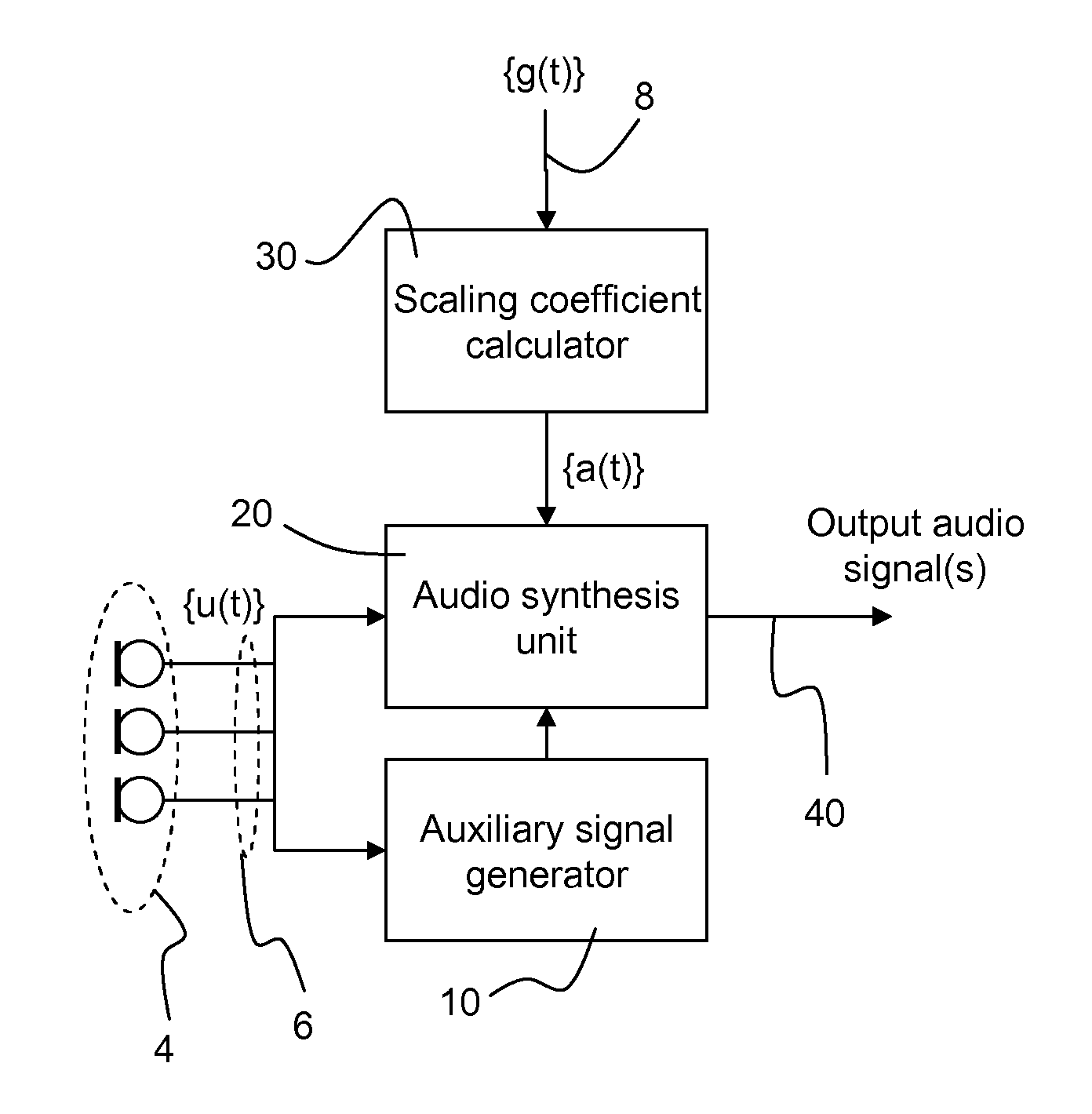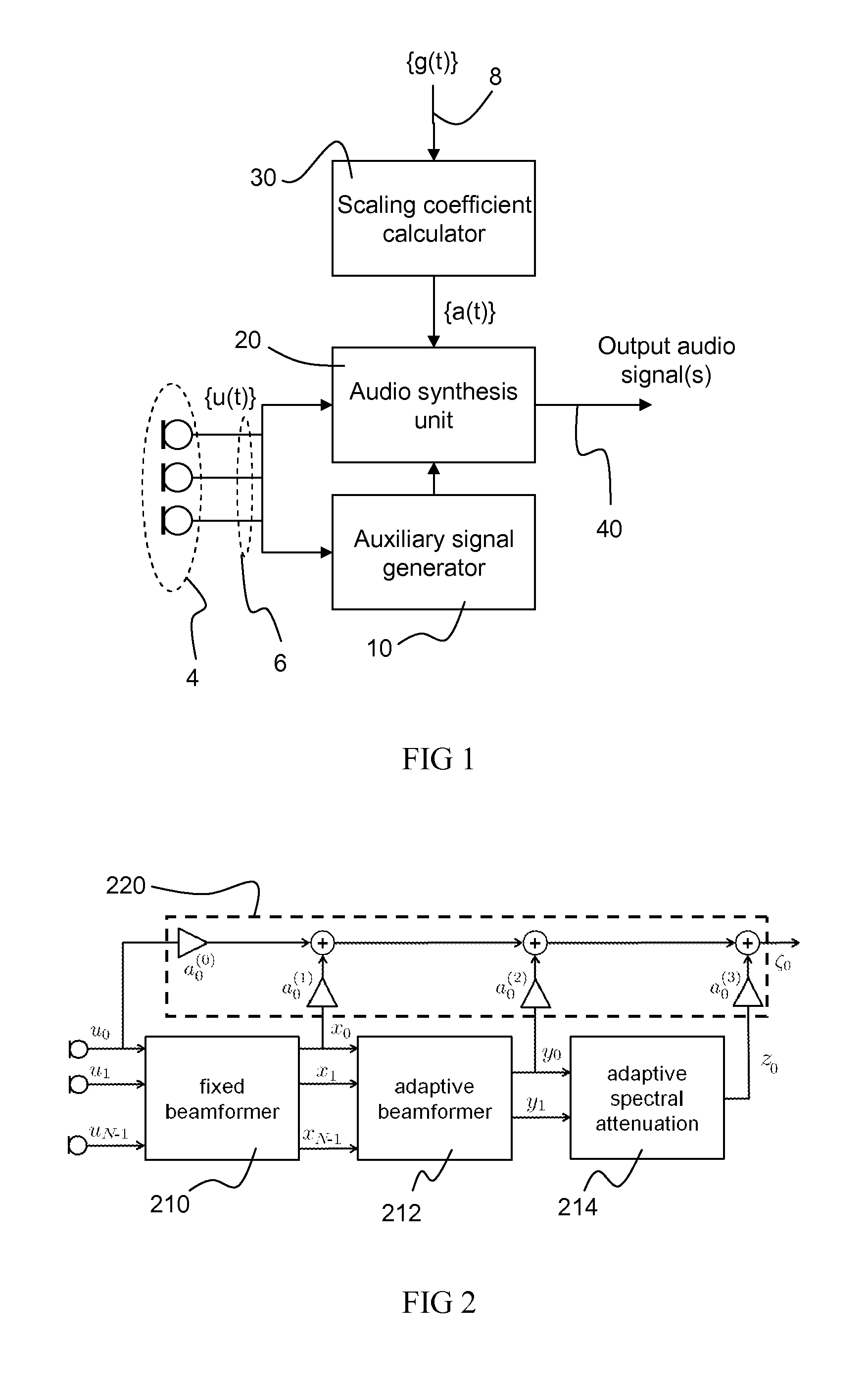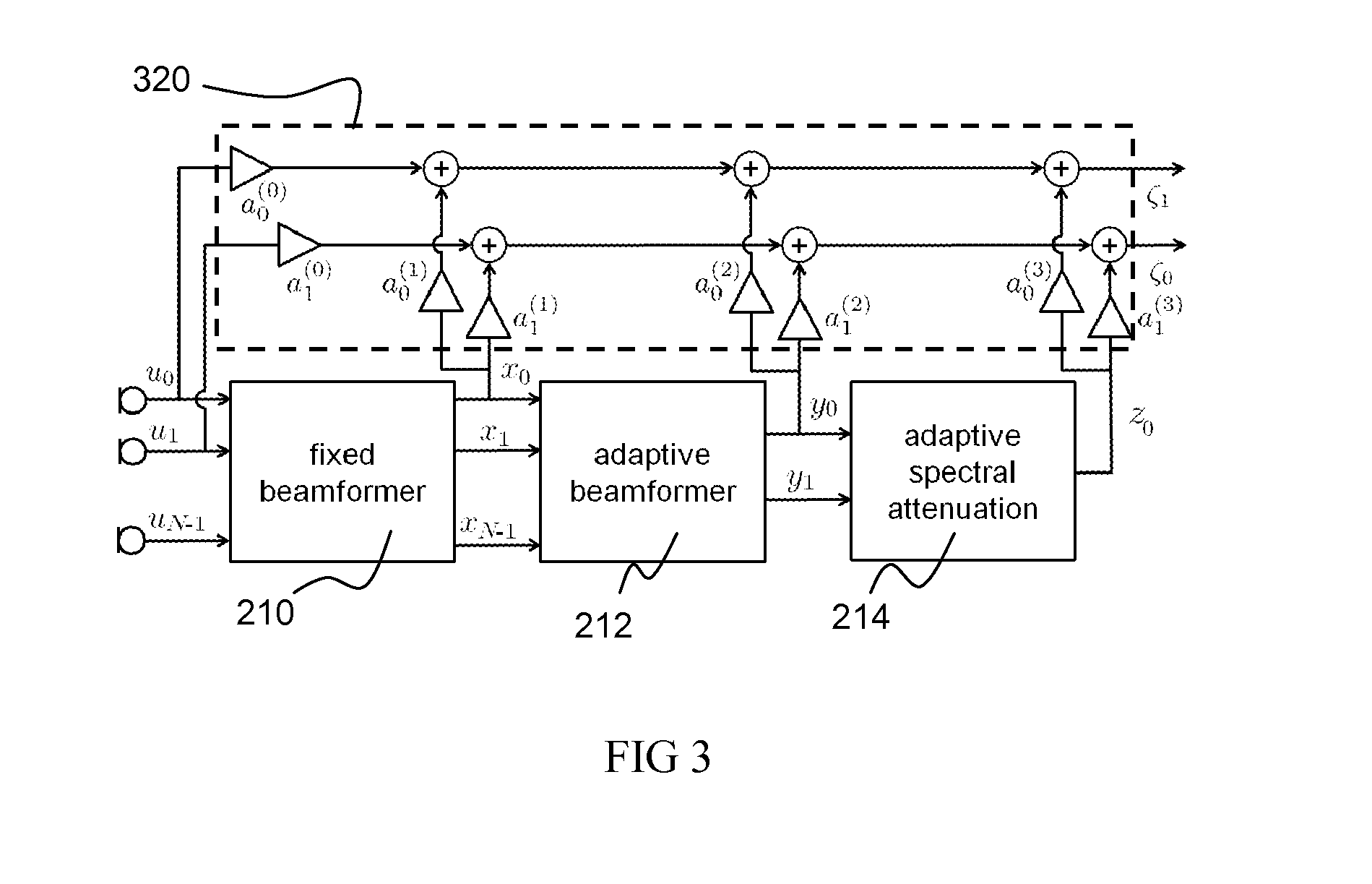Sound scene manipulation
a sound scene and manipulation technology, applied in the field of sound scene manipulation, can solve the problems of moderate computational complexity of the proposed method and linear increas
- Summary
- Abstract
- Description
- Claims
- Application Information
AI Technical Summary
Benefits of technology
Problems solved by technology
Method used
Image
Examples
first embodiment
[0098]In the first embodiment the goal is to obtain a monaural (mono) output signal. FIG. 2 shows a block structure for the calculation of the auxiliary signals xn(t), yn(t), and zn(t) required in the algorithm.
[0099]In FIG. 2, the auxiliary signal generator 10 consists of three functional blocks 210, 212, 214:[0100]1) Fixed beamformer 210: the purpose of this block is to perform reweighting of the sound source components of which the source direction is known a priori—that is, the front and back sound sources. The power ratios of these components are altered by the fixed beamformer, both relative to each other and relative to the other sound source components.[0101]2) Adaptive beamformer 212: this block serves to perform reweighting of the localized interfering sound source(s). This necessarily requires an adaptive beamforming algorithm since the interfering sound source direction is unknown.[0102]3) Adaptive spectral attenuation 214: this block reweights the diffuse noise field, b...
second embodiment
[0106]Instead, in the second embodiment, the block structure shown in FIG. 3 is used for the stereo case. Here, the stereo output signals are calculated as follows:
ζ0(t)=a0(0)(t)u0(t)+a0(1)(t)x0(t)+a0(2)(t)y0(t)+a0(3)(t)z0(t)
ζ1(t)=a1(0)(t)u1(t)+a1(1)(t)x0(t)+a1(2)(t)y0(t)+a1(3)(t)z0(t)
[0107]That is, the same set of auxiliary signals is used for generating both stereo outputs, but a different reference audio signal, un(t), is used in each case. This computation is performed by the audio synthesis unit 320 indicated by the dashed box.
[0108]In the case that N>2 (that is, when the array consists of more than two microphones), one should select u0(t) and u1(t) to be those two microphone signals that are best suited to deliver a stereo image. As will be apparent to those skilled in the art, this will typically depend on the placement of the microphones.
[0109]Note that, due to the particular structure shown in FIG. 5, the weight calculation for the second output signal ζ1(t) should be slig...
PUM
 Login to View More
Login to View More Abstract
Description
Claims
Application Information
 Login to View More
Login to View More - R&D
- Intellectual Property
- Life Sciences
- Materials
- Tech Scout
- Unparalleled Data Quality
- Higher Quality Content
- 60% Fewer Hallucinations
Browse by: Latest US Patents, China's latest patents, Technical Efficacy Thesaurus, Application Domain, Technology Topic, Popular Technical Reports.
© 2025 PatSnap. All rights reserved.Legal|Privacy policy|Modern Slavery Act Transparency Statement|Sitemap|About US| Contact US: help@patsnap.com



